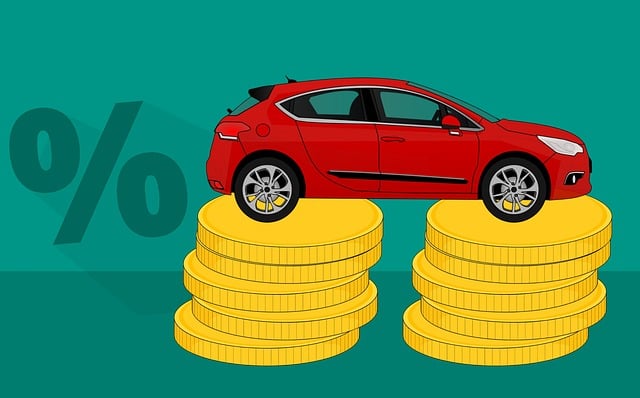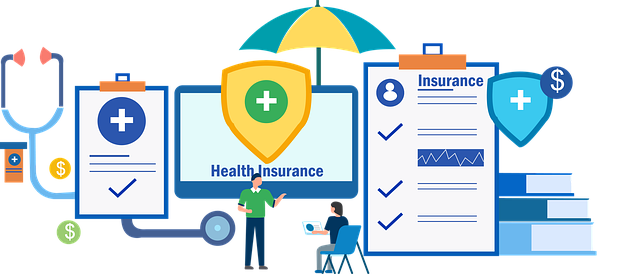High-risk drivers face challenges in finding best auto insurance rates due to elevated risk factors. Insurers consider traffic violations, at-fault accidents, age, experience, vehicle type and history to set rates. Strategies like maintaining a clean driving record, taking defensive driving courses, bundling policies, and using comparison sites help reduce costs. Technological advancements enable insurers to offer personalized best auto insurance rates based on real-time data from IoT devices and ADAS, promising improved safety and affordability for high-risk drivers.
In the complex landscape of auto insurance, high-risk drivers often face significant challenges in securing affordable coverage. This article delves into the intricate issues surrounding high-risk driver profiles, exploring factors that significantly impact their ability to obtain competitive best auto insurance rates. From understanding government initiatives and subsidies to deciphering key rate determinants, we offer practical strategies for reduction and savvy shopping tips. Additionally, we examine the role of technology and highlight success stories, providing insights into future trends in the high-risk auto insurance market.
Understanding High-Risk Driver Profiles

High-risk driver profiles encompass individuals with a history of traffic violations, at-fault accidents, or both. These drivers often face challenges in securing affordable insurance due to their elevated risk profile. Insurers consider factors like moving violations, significant accidents, and the frequency of claims when determining insurance rates. Understanding these profiles is crucial for navigating the market for best auto insurance rates.
By recognizing common characteristics, potential policyholders can make informed decisions about their coverage choices. Some high-risk drivers may qualify for discounted rates by completing defensive driving courses or maintaining a clean driving record over a specific period. Exploring these options can help mitigate costs associated with high-risk driver insurance while ensuring adequate protection on the road.
Challenges in Obtaining Insurance for High-Risk Drivers

High-risk drivers often face significant challenges when trying to secure affordable insurance, a problem that compounds the already difficult task of finding the best auto insurance rates. This demographic, which includes young, inexperienced drivers, those with multiple traffic violations, or individuals living in areas with high accident rates, is perceived as a greater financial risk by insurance companies. As a result, they typically receive higher premiums or even face denial of coverage.
The lack of accessible and reasonably priced insurance options can create a sense of frustration and leave these drivers feeling trapped. However, it’s not impossible to find suitable coverage; specialized insurers and comparative shopping can help. By understanding their unique challenges and exploring alternative providers, high-risk drivers can navigate the market and secure the best auto insurance rates tailored to their needs.
Exploring Government Initiatives and Subsidies

Many high-risk drivers often find themselves paying premium rates for auto insurance, but exploring government initiatives and subsidies can provide a breath of fresh air. Several countries have recognized the challenges faced by high-risk drivers in securing affordable coverage and have introduced programs to make best auto insurance rates more accessible. These initiatives may include financial assistance, tax breaks, or direct subsidies for those who qualify. For instance, some governments offer discounted rates for drivers who complete defensive driving courses, indicating a commitment to improving road safety while making insurance more economical.
By taking advantage of these government-backed programs, high-risk drivers can mitigate the financial burden often associated with their status. It’s a step towards ensuring that everyone on the road, regardless of their risk profile, has access to quality auto insurance at reasonable rates. This approach not only promotes inclusivity but also encourages responsible driving behavior by providing an incentive for drivers to enhance their skills and knowledge behind the wheel.
Top Factors Affecting Auto Insurance Rates

Several key factors significantly influence auto insurance rates, especially for high-risk drivers seeking affordable coverage. One of the most critical considerations is driving history. Insurers carefully examine past accidents, moving violations, and traffic infractions when calculating premiums. A clean driving record generally translates to lower rates, while a history of reckless driving or multiple claims can lead to substantial rate increases.
Another significant factor is age and experience. Younger drivers, particularly those under 25, often face higher insurance costs due to their lack of driving experience. Conversely, older drivers with many years of safe driving behind them may qualify for discounted rates. Additionally, the type and age of a vehicle play a role; newer cars equipped with advanced safety features might be insured at lower rates compared to older models, which could impact overall best auto insurance rates.
Strategies to Reduce Insurance Premiums for High-Risk Drivers

High-risk drivers often face higher insurance premiums, but there are several effective strategies to reduce costs. One key approach is to shop around for the best auto insurance rates. Different insurers have varying policies and pricing structures, so comparing quotes from multiple providers can help you find more affordable coverage. Additionally, maintaining a clean driving record by avoiding traffic violations and accidents can significantly lower premiums.
Other helpful tips include bundling your auto insurance with other policies, such as home or life insurance, as many companies offer discounts for combined policies. Maintaining proper vehicle maintenance and ensuring your car meets safety standards can also lead to savings. Furthermore, using safety features like anti-lock brakes, air bags, and a GPS tracking system may qualify you for reduced rates from certain insurers, contributing to lower best auto insurance rates overall.
Best Practices for Shopping Around for Coverage

When shopping around for affordable insurance for high-risk drivers, comparing best auto insurance rates is non-negotiable. Start by gathering quotes from multiple insurers to gain a clear picture of the market. Utilize online tools and comparison sites to streamline this process, allowing you to input your information once and receive several offers simultaneously. This saves time and effort while ensuring you’re considering options with competitive best auto insurance rates.
Next, carefully review each quote’s details. Pay attention to coverage limits, deductibles, and any additional costs or exclusions. While price is important, don’t solely focus on the lowest quote; ensure the insurer offers adequate coverage for your needs. Remember, the goal is to find a balance between affordability and sufficient protection.
The Role of Technology in High-Risk Driver Insurance

In today’s digital era, technology plays a pivotal role in shaping the insurance landscape, particularly for high-risk drivers seeking affordable coverage. Insurers are leveraging advanced analytics and data-driven insights to assess risk more accurately and offer tailored policies. By analysing vast amounts of data from sensors, cameras, and driving behaviour patterns, insurers can now provide best auto insurance rates that reflect an individual’s actual risk profile. This shift towards technology not only enhances transparency but also allows high-risk drivers to access competitive premiums without compromising on safety measures.
Furthermore, innovative technologies like telematics devices and mobile apps empower drivers to improve their safe driving habits. These tools track driving behaviour, providing real-time feedback and rewards for responsible driving practices. Such initiatives encourage positive change, potentially leading to reduced claims and lower insurance costs for high-risk drivers over time. Ultimately, technology is revolutionising how insurers operate, making it easier for high-risk individuals to secure the best auto insurance rates while ensuring they meet their coverage needs.
Success Stories: Affordable Coverage for Real High-Risk Drivers

Many high-risk drivers, often facing elevated premiums due to their past driving records or vehicle types, are delighted to discover that affordable insurance is achievable. By being proactive and comparing various quotes from reputable providers, they’ve secured best auto insurance rates that match their needs without breaking the bank. These success stories prove that even those considered high-risk can access quality coverage at competitive prices.
Open communication with insurers about their specific circumstances has been key to unlocking these savings. Customizable policies, discounts for safety features, and good driving behavior over time have contributed to significant reductions in premium costs. As a result, real drivers are enjoying peace of mind behind the wheel, knowing they can protect themselves on the road without financial strain.
Future Trends in the High-Risk Auto Insurance Market

The high-risk auto insurance market is poised for significant shifts, driven by evolving customer expectations and technological advancements. Insurers are increasingly leveraging data analytics to tailor policies more accurately based on individual driving patterns and behaviors, which could lead to more competitive best auto insurance rates for specific segments of high-risk drivers. This personalized approach promises not only better pricing but also enhanced safety through targeted risk mitigation strategies.
Furthermore, the integration of Internet of Things (IoT) devices and autonomous vehicle technology is expected to revolutionize this sector. Advanced driver-assistance systems (ADAS) and connected cars will generate vast amounts of real-time data, enabling insurers to offer dynamic pricing based on immediate driving conditions and behaviors. This trend could foster a more inclusive insurance ecosystem, making high-risk drivers eligible for more affordable coverage as their driving habits improve over time.
